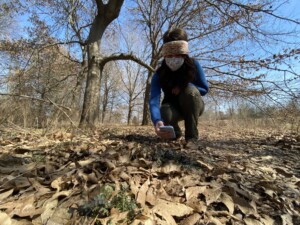Until quite recently, people thought that cities are places apart from nature. Even urban gardens and parks were designed to appeal to human eyes rather than respond to the needs of birds and pollinators. Cities, so the assumption went, exist to fulfill the desires of people, and nature exists in the fields, prairies and forests where plants and animals grow and live, largely separated from the threat that those desires pose to them.

But the assurance of in an intact nature unaffected by human exploitation is now gone. All plants and animals in all parts of the world are subject to climate change or soon will be. Species extinctions due to habitat loss occur with greater frequency. They also happen routinely when diseases and predators are introduced to parts of the world where organisms may be defenseless against them. Just think of ash trees threatening to go extinct in North American forests because the emerald ash borer was accidentally imported in shipping crates from east Asia.
All these threats originate in cities where human wishes are shaped and technologies are invented to fulfill them. Historians argue that from the beginning of civilization, that is for the last 10,000 years, cities could grow only because they extracted natural resources from the land that surrounded them. Now that over half the world’s population lives in urban areas, that resource extraction and the destruction of nature it entailed have truly gone global. Separating the natural environment from the urban environment no longer makes sense. There are no spaces on this earth where the evolution of wild species still occurs unaffected by the life humans have created for themselves. In other words, nowhere is nature independent from our urban spheres of concrete, steel and asphalt, dotted, here and there, with manicured greenspaces.
The City Nature Challenge questions a sharp division between the urban and the wild, but it reverses the common perspective: rather than focusing on the damage that urban habits and lifestyles inflict on nature (important though these issues are), the event proposes to celebrate the resilience of nature as it manifests itself in built-up areas. For it turns out that nature does thrive in cities. Plants and animals find spaces where they can live and reproduce.
Wanting to inspire urban dwellers to go out and discover, photograph, and document wild plants and animals all over Fayette County, The City Nature Challenge could hardly be more closely aligned with our Wild Ones mission. We have always promoted gardening for nature, no matter how small our urban plot. Participating in the Challenge allows us to leave our trowels in the garage for once, grab our phones or cameras and go out to just observe, record and enjoy nature. If we truly care about its destruction – about climate change, habitat loss, species extinction – would it not be a good idea to start by knowing the nature around us: the habits of the birds at our feeder; the species of bees collecting pollen on the clover in our lawn; the names of the wildflowers that may have survived along a creek after a hundred years of urban development?
Beate Popkin
